Attractions · Ecuador · Going Out · Regions · South America
What to find in the Plaza Grande of Quito
The Plaza Grande or Plaza de la Independencia, is located on Av. Venezuela between Chile and Espejo. It is one of the biggest attractions of the colonial center of Quito. In it some of the architectural jewels are discovered which were fundamental pieces so that it has been declared by the United Nations, as Cultural Heritage of Humanity.
The city was drawn around this square and it is in 1612 that the main powers of the State are installed in its surroundings, the same headquarters are still in the Plaza.
 Monument to Independence
In the center of the Plaza de la Independencia we find the monument to the Heroes of Independence that was built at the beginning of the 20th century, which symbolizes the triumph of the Republic against the Spanish colony. In it, flower offerings are deposited every August 10 to remember “The First Scream of Independence” by Quito’s ancestors in the year 1809.
The monument stands on an octagonal surface of stone formed by two bodies: the first of three steps followed by a ramp with a small high slope, and then another of three more steps, in whose center the basement is raised.
Monument to Independence
In the center of the Plaza de la Independencia we find the monument to the Heroes of Independence that was built at the beginning of the 20th century, which symbolizes the triumph of the Republic against the Spanish colony. In it, flower offerings are deposited every August 10 to remember “The First Scream of Independence” by Quito’s ancestors in the year 1809.
The monument stands on an octagonal surface of stone formed by two bodies: the first of three steps followed by a ramp with a small high slope, and then another of three more steps, in whose center the basement is raised.
 Meaning
The so-called “Iberian Ensemble”, which is located on the level of the stairs and is the lowest of all, consists of several sections with different meanings each:
Two fallen banners, representing the end of Spanish sovereignty on Quito soil, a cannon and three broken rifles, representing the end of oppression by arms, a cross, symbol of religion imposed by force as a critique of liberalism to the conservatives, a lion, that is the traditional symbol of the monarchy, and that in the shield of Spain is representing the Crown of Castile. He leaves wounded by an arrow, roaring defeated the Condor.
The condor, located on the basement of the great column, not only constitutes the emblematic bird of Ecuador that is even in its national shield, but in this particular case it represents the country breaking the chains of Spain with its sharp claws. In this regard there is an anecdote in which Francisco Durini had to make a wax mold of a dead condor, to send it to Italy and that the figure could be manufactured, since in Europe this bird was practically unknown.
The acanthus leaves that adorn the corners of the basement, on the other hand, are a variety of leaves that have thorns, and in the Greek tradition they represent the triumph achieved with effort and penalties; in this case the sad chapter of the massacre of August 2, 1810, in which much of the heroes who participated in the First Cry of Independence perished.
“The lady of Independence”
The sphere on which the Lady of Independence perches is nothing more than an orb, representing the planet earth crossed in half by a ring that is the equator, in which four faces of lions can be seen holding a ring of gold and in the direction of the cardinal points. Under the ring, however, you can see more acanthus leaves.
Municipal building
Before 1973, the Municipality of Quito worked in a house located on the corner of Venezuela Street and Espejo passage, next to the Plaza de la Independencia. In the administration of Julio Moreno, 1960s, construction was overthrown.
Only in 1973, in the administration of Sixto Durán Ballén, the building of the Municipal Palace was built, for which they acquired the private houses that existed until Chile Street.
Currently, the offices for the 15 councilors, the session hall of the Metropolitan Council, the Attorney General’s Office and the General Secretariat were adapted; In addition to a tourist information center in Quito.
Meaning
The so-called “Iberian Ensemble”, which is located on the level of the stairs and is the lowest of all, consists of several sections with different meanings each:
Two fallen banners, representing the end of Spanish sovereignty on Quito soil, a cannon and three broken rifles, representing the end of oppression by arms, a cross, symbol of religion imposed by force as a critique of liberalism to the conservatives, a lion, that is the traditional symbol of the monarchy, and that in the shield of Spain is representing the Crown of Castile. He leaves wounded by an arrow, roaring defeated the Condor.
The condor, located on the basement of the great column, not only constitutes the emblematic bird of Ecuador that is even in its national shield, but in this particular case it represents the country breaking the chains of Spain with its sharp claws. In this regard there is an anecdote in which Francisco Durini had to make a wax mold of a dead condor, to send it to Italy and that the figure could be manufactured, since in Europe this bird was practically unknown.
The acanthus leaves that adorn the corners of the basement, on the other hand, are a variety of leaves that have thorns, and in the Greek tradition they represent the triumph achieved with effort and penalties; in this case the sad chapter of the massacre of August 2, 1810, in which much of the heroes who participated in the First Cry of Independence perished.
“The lady of Independence”
The sphere on which the Lady of Independence perches is nothing more than an orb, representing the planet earth crossed in half by a ring that is the equator, in which four faces of lions can be seen holding a ring of gold and in the direction of the cardinal points. Under the ring, however, you can see more acanthus leaves.
Municipal building
Before 1973, the Municipality of Quito worked in a house located on the corner of Venezuela Street and Espejo passage, next to the Plaza de la Independencia. In the administration of Julio Moreno, 1960s, construction was overthrown.
Only in 1973, in the administration of Sixto Durán Ballén, the building of the Municipal Palace was built, for which they acquired the private houses that existed until Chile Street.
Currently, the offices for the 15 councilors, the session hall of the Metropolitan Council, the Attorney General’s Office and the General Secretariat were adapted; In addition to a tourist information center in Quito.
 Quinde store
There are florcklor items and contemporary art there are also candles of different colors in raft boxes, jewelry items straw hats. You can also find several religious items such as figures for Easter and information for tourists.
Archbishop’s Palace
This building served as the headquarters of the Archdiocese and residence of the archbishop of Quito, the purchase was made to the conqueror Núñez de Bonilla and his heirs to later begin construction in 1545, then had several modifications in 1775.
Since 1858 the Archbishop’s Palace has undergone several modifications in its infrastructure, but it was in the year of 1970 when the archbishop of Quito found the immediate need for the reconstruction of the Palace, due to the danger posed by the building due to its age.
Quinde store
There are florcklor items and contemporary art there are also candles of different colors in raft boxes, jewelry items straw hats. You can also find several religious items such as figures for Easter and information for tourists.
Archbishop’s Palace
This building served as the headquarters of the Archdiocese and residence of the archbishop of Quito, the purchase was made to the conqueror Núñez de Bonilla and his heirs to later begin construction in 1545, then had several modifications in 1775.
Since 1858 the Archbishop’s Palace has undergone several modifications in its infrastructure, but it was in the year of 1970 when the archbishop of Quito found the immediate need for the reconstruction of the Palace, due to the danger posed by the building due to its age.
 Archbishop’s palace shopping Center
The shopping center has several restaurants of luxury and specialties, as well as several stores that offer different services such as internet, ice cream, clothes, crafts, etc.
The palace can be accessed by a hallway that reaches a large stone courtyard where we find a beautiful stack that is surrounded by four corridors.
Its structure is neoclassical, in the front it has a large balcony that is located in the center of the carvings of the Vatican arms on the right and the Archdiocese of Quito on the left.
Carondelet Palace
The origin of this wonderful building began in the colonial domain, around 1571, with the incorporation of the royal royal houses located in that same town.
Archbishop’s palace shopping Center
The shopping center has several restaurants of luxury and specialties, as well as several stores that offer different services such as internet, ice cream, clothes, crafts, etc.
The palace can be accessed by a hallway that reaches a large stone courtyard where we find a beautiful stack that is surrounded by four corridors.
Its structure is neoclassical, in the front it has a large balcony that is located in the center of the carvings of the Vatican arms on the right and the Archdiocese of Quito on the left.
Carondelet Palace
The origin of this wonderful building began in the colonial domain, around 1571, with the incorporation of the royal royal houses located in that same town. The new royal palace
In 1800 Francisco Luis Barón de Carondelet was proclaimed chief of the court, and after 2 years he employed the Spanish Antonio García so that under his mandate he carried out restoration and improvement occupations for the courthouse and for the church.
Architecture
This palace is located on the western side of the square of independence, on García Moreno Avenue between Chile, Espejo and Benalcázar streets, nowadays it is the presidential and vice-presidential housing of the nation, as well as the Ministry of administration, installing the determined group of Carondelet, which incorporates the palaces of the old mail and the administration divided by a parking lot.
Facade
Durini Cáceres, and it is he who is in charge of giving it a neoclassical style, which would become the new image of Quito and Ecuadorian power.
Store
Andesite stone is shown on the front façade of the palace, symbolized by 10 small-sized stores that welcomed individual shops from the beginning, where craft shops, hairdressers of the time, candle shops, and toquilla straw shops operate today. In this way there is a combination between the history and heritage of the country.
The new royal palace
In 1800 Francisco Luis Barón de Carondelet was proclaimed chief of the court, and after 2 years he employed the Spanish Antonio García so that under his mandate he carried out restoration and improvement occupations for the courthouse and for the church.
Architecture
This palace is located on the western side of the square of independence, on García Moreno Avenue between Chile, Espejo and Benalcázar streets, nowadays it is the presidential and vice-presidential housing of the nation, as well as the Ministry of administration, installing the determined group of Carondelet, which incorporates the palaces of the old mail and the administration divided by a parking lot.
Facade
Durini Cáceres, and it is he who is in charge of giving it a neoclassical style, which would become the new image of Quito and Ecuadorian power.
Store
Andesite stone is shown on the front façade of the palace, symbolized by 10 small-sized stores that welcomed individual shops from the beginning, where craft shops, hairdressers of the time, candle shops, and toquilla straw shops operate today. In this way there is a combination between the history and heritage of the country.
 Quito Cathedral
The first construction was provisional, the first open school in Quito worked. It was transformed into a Cathedral when the Bishopric of Quito was erected in 1545 (Quito Metropolitan Cathedral, 2016)
Facade
The facade maintains a neoclassical style. The Spanish Architect Antonio García was hired to design the plans, after being approved the work begins immediately in the year 1802 until 1807.
Quito Cathedral
The first construction was provisional, the first open school in Quito worked. It was transformed into a Cathedral when the Bishopric of Quito was erected in 1545 (Quito Metropolitan Cathedral, 2016)
Facade
The facade maintains a neoclassical style. The Spanish Architect Antonio García was hired to design the plans, after being approved the work begins immediately in the year 1802 until 1807.
 Stores
On its side you can see an area where there are shops which offer typical products such as sweets that are made from sweets, coffee shops, and food.
Street of the 7 Crosses
The Street of the Seven Crosses was outlined as several ravines were filled, from south to north the Panecillo (ancient temple of the sun – Yavirac) can be seen at one end and on the other side the neighborhood of San Juan (formerly the temple of the moon – Keel).
With your back to Panecillo, in the south-north direction you can visit the following crosses located in the atriums of the churches of the historic center of Quito.
Stores
On its side you can see an area where there are shops which offer typical products such as sweets that are made from sweets, coffee shops, and food.
Street of the 7 Crosses
The Street of the Seven Crosses was outlined as several ravines were filled, from south to north the Panecillo (ancient temple of the sun – Yavirac) can be seen at one end and on the other side the neighborhood of San Juan (formerly the temple of the moon – Keel).
With your back to Panecillo, in the south-north direction you can visit the following crosses located in the atriums of the churches of the historic center of Quito.
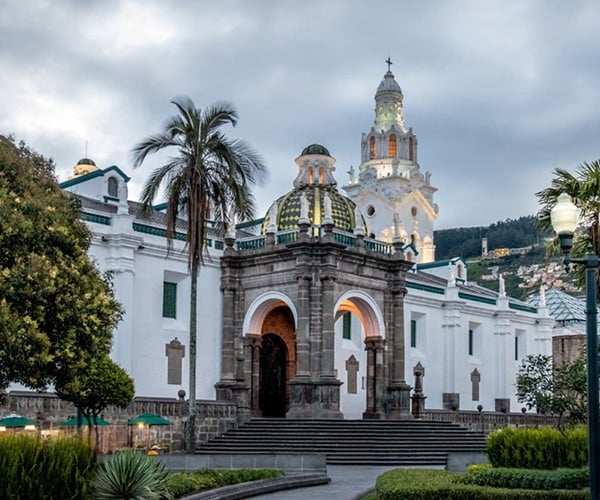 Monument to Independence
In the center of the Plaza de la Independencia we find the monument to the Heroes of Independence that was built at the beginning of the 20th century, which symbolizes the triumph of the Republic against the Spanish colony. In it, flower offerings are deposited every August 10 to remember “The First Scream of Independence” by Quito’s ancestors in the year 1809.
The monument stands on an octagonal surface of stone formed by two bodies: the first of three steps followed by a ramp with a small high slope, and then another of three more steps, in whose center the basement is raised.
Monument to Independence
In the center of the Plaza de la Independencia we find the monument to the Heroes of Independence that was built at the beginning of the 20th century, which symbolizes the triumph of the Republic against the Spanish colony. In it, flower offerings are deposited every August 10 to remember “The First Scream of Independence” by Quito’s ancestors in the year 1809.
The monument stands on an octagonal surface of stone formed by two bodies: the first of three steps followed by a ramp with a small high slope, and then another of three more steps, in whose center the basement is raised.
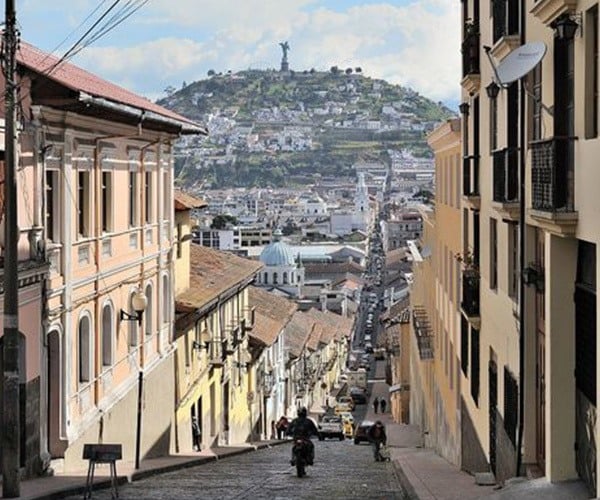 Meaning
The so-called “Iberian Ensemble”, which is located on the level of the stairs and is the lowest of all, consists of several sections with different meanings each:
Two fallen banners, representing the end of Spanish sovereignty on Quito soil, a cannon and three broken rifles, representing the end of oppression by arms, a cross, symbol of religion imposed by force as a critique of liberalism to the conservatives, a lion, that is the traditional symbol of the monarchy, and that in the shield of Spain is representing the Crown of Castile. He leaves wounded by an arrow, roaring defeated the Condor.
The condor, located on the basement of the great column, not only constitutes the emblematic bird of Ecuador that is even in its national shield, but in this particular case it represents the country breaking the chains of Spain with its sharp claws. In this regard there is an anecdote in which Francisco Durini had to make a wax mold of a dead condor, to send it to Italy and that the figure could be manufactured, since in Europe this bird was practically unknown.
The acanthus leaves that adorn the corners of the basement, on the other hand, are a variety of leaves that have thorns, and in the Greek tradition they represent the triumph achieved with effort and penalties; in this case the sad chapter of the massacre of August 2, 1810, in which much of the heroes who participated in the First Cry of Independence perished.
“The lady of Independence”
The sphere on which the Lady of Independence perches is nothing more than an orb, representing the planet earth crossed in half by a ring that is the equator, in which four faces of lions can be seen holding a ring of gold and in the direction of the cardinal points. Under the ring, however, you can see more acanthus leaves.
Municipal building
Before 1973, the Municipality of Quito worked in a house located on the corner of Venezuela Street and Espejo passage, next to the Plaza de la Independencia. In the administration of Julio Moreno, 1960s, construction was overthrown.
Only in 1973, in the administration of Sixto Durán Ballén, the building of the Municipal Palace was built, for which they acquired the private houses that existed until Chile Street.
Currently, the offices for the 15 councilors, the session hall of the Metropolitan Council, the Attorney General’s Office and the General Secretariat were adapted; In addition to a tourist information center in Quito.
Meaning
The so-called “Iberian Ensemble”, which is located on the level of the stairs and is the lowest of all, consists of several sections with different meanings each:
Two fallen banners, representing the end of Spanish sovereignty on Quito soil, a cannon and three broken rifles, representing the end of oppression by arms, a cross, symbol of religion imposed by force as a critique of liberalism to the conservatives, a lion, that is the traditional symbol of the monarchy, and that in the shield of Spain is representing the Crown of Castile. He leaves wounded by an arrow, roaring defeated the Condor.
The condor, located on the basement of the great column, not only constitutes the emblematic bird of Ecuador that is even in its national shield, but in this particular case it represents the country breaking the chains of Spain with its sharp claws. In this regard there is an anecdote in which Francisco Durini had to make a wax mold of a dead condor, to send it to Italy and that the figure could be manufactured, since in Europe this bird was practically unknown.
The acanthus leaves that adorn the corners of the basement, on the other hand, are a variety of leaves that have thorns, and in the Greek tradition they represent the triumph achieved with effort and penalties; in this case the sad chapter of the massacre of August 2, 1810, in which much of the heroes who participated in the First Cry of Independence perished.
“The lady of Independence”
The sphere on which the Lady of Independence perches is nothing more than an orb, representing the planet earth crossed in half by a ring that is the equator, in which four faces of lions can be seen holding a ring of gold and in the direction of the cardinal points. Under the ring, however, you can see more acanthus leaves.
Municipal building
Before 1973, the Municipality of Quito worked in a house located on the corner of Venezuela Street and Espejo passage, next to the Plaza de la Independencia. In the administration of Julio Moreno, 1960s, construction was overthrown.
Only in 1973, in the administration of Sixto Durán Ballén, the building of the Municipal Palace was built, for which they acquired the private houses that existed until Chile Street.
Currently, the offices for the 15 councilors, the session hall of the Metropolitan Council, the Attorney General’s Office and the General Secretariat were adapted; In addition to a tourist information center in Quito.
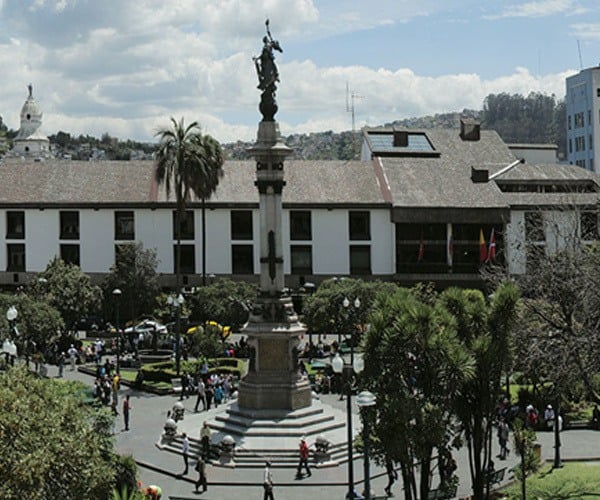 Quinde store
There are florcklor items and contemporary art there are also candles of different colors in raft boxes, jewelry items straw hats. You can also find several religious items such as figures for Easter and information for tourists.
Archbishop’s Palace
This building served as the headquarters of the Archdiocese and residence of the archbishop of Quito, the purchase was made to the conqueror Núñez de Bonilla and his heirs to later begin construction in 1545, then had several modifications in 1775.
Since 1858 the Archbishop’s Palace has undergone several modifications in its infrastructure, but it was in the year of 1970 when the archbishop of Quito found the immediate need for the reconstruction of the Palace, due to the danger posed by the building due to its age.
Quinde store
There are florcklor items and contemporary art there are also candles of different colors in raft boxes, jewelry items straw hats. You can also find several religious items such as figures for Easter and information for tourists.
Archbishop’s Palace
This building served as the headquarters of the Archdiocese and residence of the archbishop of Quito, the purchase was made to the conqueror Núñez de Bonilla and his heirs to later begin construction in 1545, then had several modifications in 1775.
Since 1858 the Archbishop’s Palace has undergone several modifications in its infrastructure, but it was in the year of 1970 when the archbishop of Quito found the immediate need for the reconstruction of the Palace, due to the danger posed by the building due to its age.
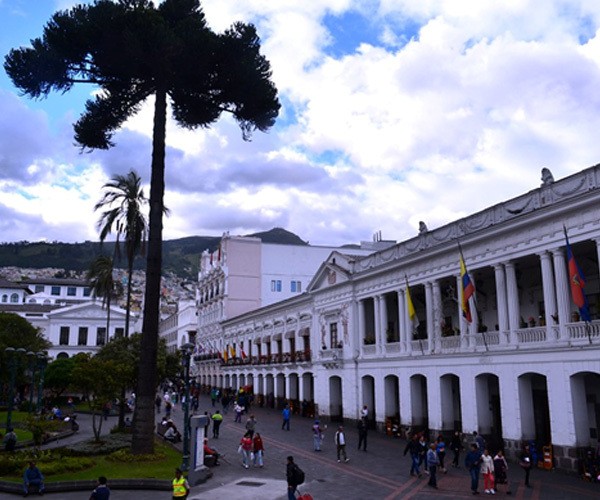 Archbishop’s palace shopping Center
The shopping center has several restaurants of luxury and specialties, as well as several stores that offer different services such as internet, ice cream, clothes, crafts, etc.
The palace can be accessed by a hallway that reaches a large stone courtyard where we find a beautiful stack that is surrounded by four corridors.
Its structure is neoclassical, in the front it has a large balcony that is located in the center of the carvings of the Vatican arms on the right and the Archdiocese of Quito on the left.
Carondelet Palace
The origin of this wonderful building began in the colonial domain, around 1571, with the incorporation of the royal royal houses located in that same town.
Archbishop’s palace shopping Center
The shopping center has several restaurants of luxury and specialties, as well as several stores that offer different services such as internet, ice cream, clothes, crafts, etc.
The palace can be accessed by a hallway that reaches a large stone courtyard where we find a beautiful stack that is surrounded by four corridors.
Its structure is neoclassical, in the front it has a large balcony that is located in the center of the carvings of the Vatican arms on the right and the Archdiocese of Quito on the left.
Carondelet Palace
The origin of this wonderful building began in the colonial domain, around 1571, with the incorporation of the royal royal houses located in that same town.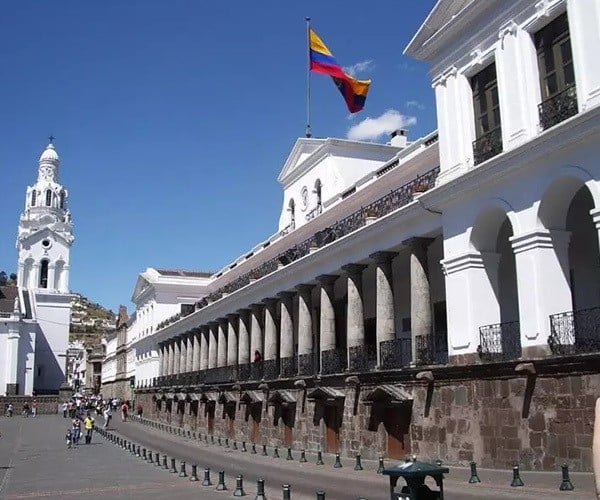 The new royal palace
In 1800 Francisco Luis Barón de Carondelet was proclaimed chief of the court, and after 2 years he employed the Spanish Antonio García so that under his mandate he carried out restoration and improvement occupations for the courthouse and for the church.
Architecture
This palace is located on the western side of the square of independence, on García Moreno Avenue between Chile, Espejo and Benalcázar streets, nowadays it is the presidential and vice-presidential housing of the nation, as well as the Ministry of administration, installing the determined group of Carondelet, which incorporates the palaces of the old mail and the administration divided by a parking lot.
Facade
Durini Cáceres, and it is he who is in charge of giving it a neoclassical style, which would become the new image of Quito and Ecuadorian power.
Store
Andesite stone is shown on the front façade of the palace, symbolized by 10 small-sized stores that welcomed individual shops from the beginning, where craft shops, hairdressers of the time, candle shops, and toquilla straw shops operate today. In this way there is a combination between the history and heritage of the country.
The new royal palace
In 1800 Francisco Luis Barón de Carondelet was proclaimed chief of the court, and after 2 years he employed the Spanish Antonio García so that under his mandate he carried out restoration and improvement occupations for the courthouse and for the church.
Architecture
This palace is located on the western side of the square of independence, on García Moreno Avenue between Chile, Espejo and Benalcázar streets, nowadays it is the presidential and vice-presidential housing of the nation, as well as the Ministry of administration, installing the determined group of Carondelet, which incorporates the palaces of the old mail and the administration divided by a parking lot.
Facade
Durini Cáceres, and it is he who is in charge of giving it a neoclassical style, which would become the new image of Quito and Ecuadorian power.
Store
Andesite stone is shown on the front façade of the palace, symbolized by 10 small-sized stores that welcomed individual shops from the beginning, where craft shops, hairdressers of the time, candle shops, and toquilla straw shops operate today. In this way there is a combination between the history and heritage of the country.
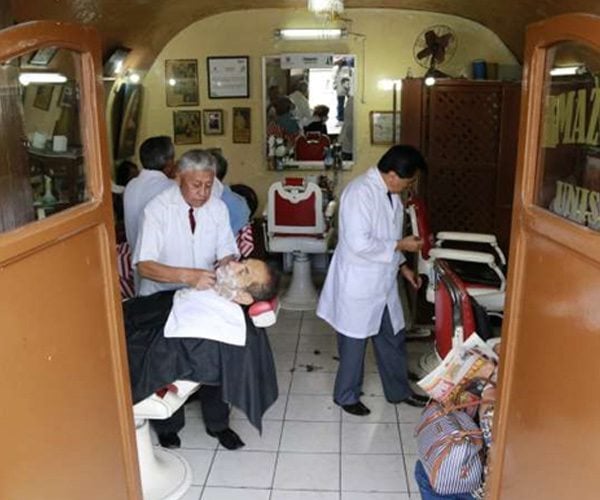 Quito Cathedral
The first construction was provisional, the first open school in Quito worked. It was transformed into a Cathedral when the Bishopric of Quito was erected in 1545 (Quito Metropolitan Cathedral, 2016)
Facade
The facade maintains a neoclassical style. The Spanish Architect Antonio García was hired to design the plans, after being approved the work begins immediately in the year 1802 until 1807.
Quito Cathedral
The first construction was provisional, the first open school in Quito worked. It was transformed into a Cathedral when the Bishopric of Quito was erected in 1545 (Quito Metropolitan Cathedral, 2016)
Facade
The facade maintains a neoclassical style. The Spanish Architect Antonio García was hired to design the plans, after being approved the work begins immediately in the year 1802 until 1807.
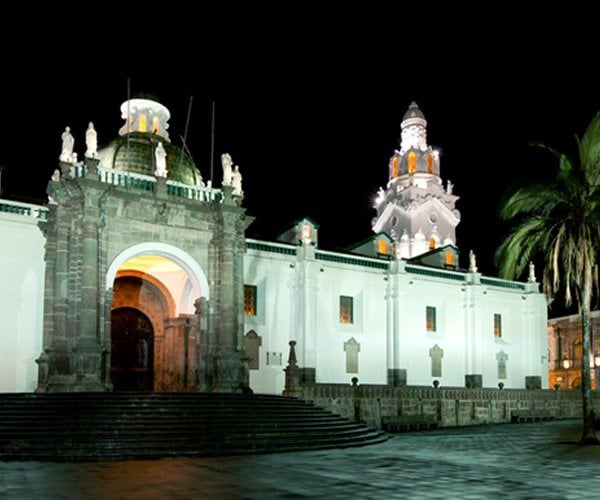 Stores
On its side you can see an area where there are shops which offer typical products such as sweets that are made from sweets, coffee shops, and food.
Street of the 7 Crosses
The Street of the Seven Crosses was outlined as several ravines were filled, from south to north the Panecillo (ancient temple of the sun – Yavirac) can be seen at one end and on the other side the neighborhood of San Juan (formerly the temple of the moon – Keel).
With your back to Panecillo, in the south-north direction you can visit the following crosses located in the atriums of the churches of the historic center of Quito.
Stores
On its side you can see an area where there are shops which offer typical products such as sweets that are made from sweets, coffee shops, and food.
Street of the 7 Crosses
The Street of the Seven Crosses was outlined as several ravines were filled, from south to north the Panecillo (ancient temple of the sun – Yavirac) can be seen at one end and on the other side the neighborhood of San Juan (formerly the temple of the moon – Keel).
With your back to Panecillo, in the south-north direction you can visit the following crosses located in the atriums of the churches of the historic center of Quito.
- First cross: San Lázaro Psychiatric Hospital.
- Second cross: Queen’s Arch.
- Third cross: Church of the Company.
- Fourth cross: Church of the Tabernacle.
- Fifth cross: Cathedral Church.
- Sixth cross: Church of the Immaculate Conception.
- Seventh cross: Church of Santa Barbara.
Did you enjoy this article?
Receive similar content direct to your inbox.


Wow, there is so much history jam packed in one area! Your attention to descriptive detail is excellent as well. Feels as if I’m on the trip myself and going along on the most informative tour. Mahalo!
All of this came as a real surprise to me. I know of a few travellers who have passed through Quito on their way to the Galapagos or on their way to Latin American adventures. They said nice things about the Quito but I don’t think any of them called in for long enough to get to know what is obviously a really interesting city with an amazing amount of history on show, I doubt that any of them scratched below the surface to discover the real historic Quito.
Obviously, you need to know what you are looking for and this piece would serve you well as a guide. I’d enjoy doing something like ticking off the Seven Crosses.
I’m amazed that so much colonial history still exists in Quito, from reading this post I get the sense of a grand colonial city, OK maybe some of the grandeur has faded a bit. That view looking down the steep street is astounding.
These plazas and some of the architecture reminded me a bit of what I saw last year in Eastern Europe. And even in Malaysia, Penang Island which used to be a major British port. It seems like the architecture in Quito is a little bit more modern, however, than its European counterpart. Anyway, this definitely brought to light more of the cultural aspect in Quito. I’ve seen some beautiful pictures of the landscape there, but never the architecture like this. Thanks for sharing!
A really interesting article, plenty here I didn’t know about before. Can tourists take a tour inside the Carondelet Palace and Cathedral? There are touristy outlets for souvenirs and refreshments around various key places so one would hope you could take a look inside. I’m pretty sure I’d heard of the 7 Crosses but had no idea that’s what it referred to, that there are literally crosses in the church atriums. Fascinating stuff, so much history and culture.
Frightening that although it is now more than two centuries on from The First Scream of Independence that Quito still remembers those days.
For all the civilised architecture of these Latin American cities I feel that the people of Quito do not want the dark side, the horror and suffering of colonialism to be forgotten.
Although the Spanish conquistadors marched and rode with a cross before them it was largely a mission of plundering riches and forced conversions.
In many ways the Plaza Grande, even the grand name, comes up with so much of what I’d expect from a Central American or Latin American Square. Then again when you read on you find out how much culture and history there is to find when you dig that bit deeper. Fascinating place, must visit on my next Latin American big adventure.
So many historic buildings and monuments in just one area of Quito. It’s all so grand and beautiful. Everything looks historic and very well preserved and maintained. It’s also the perfect place for an afternoon stroll going through all the 7 crosses. Probably the best activity before a hearty merienda or empanada.